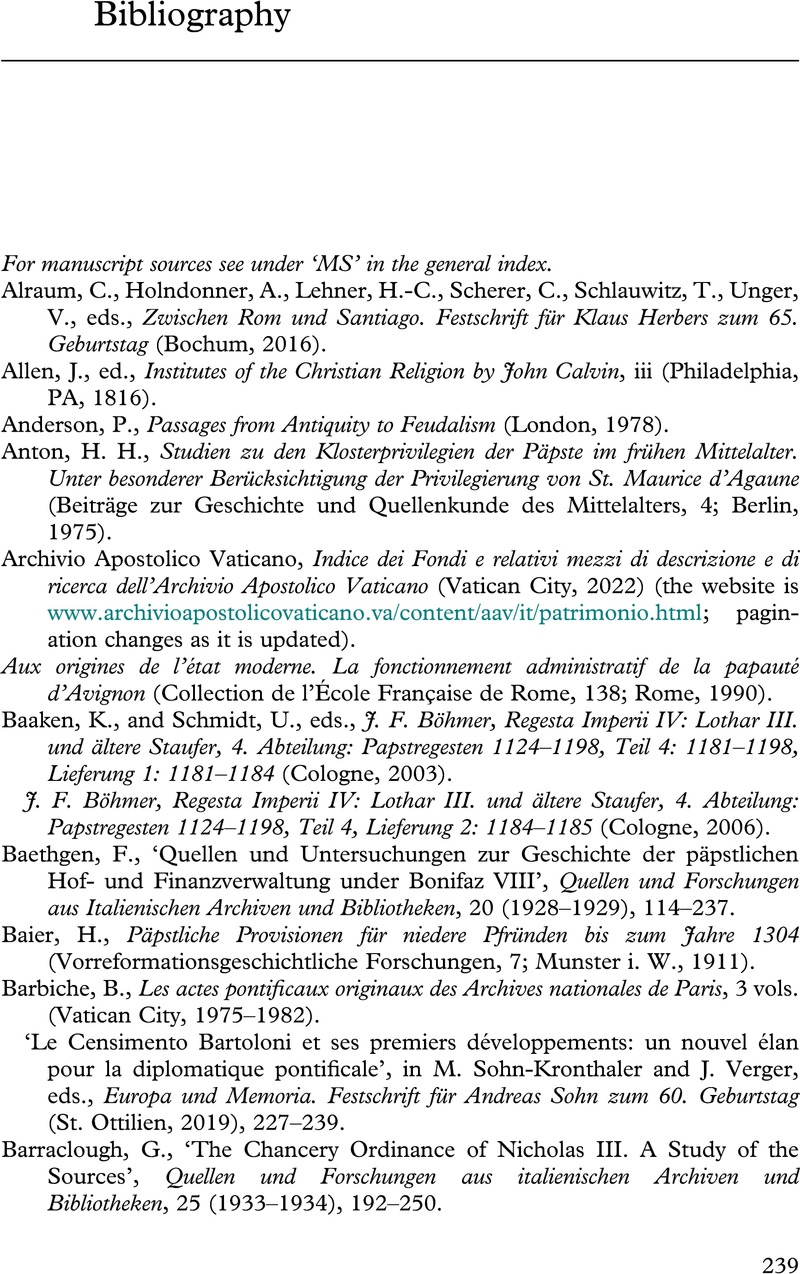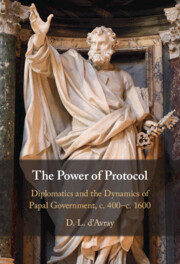Book contents
- The Power of Protocol
- The Power of Protocol
- Copyright page
- Dedication
- Contents
- Plates
- Acknowledgements
- Abbreviations
- Preface
- 1 Introduction
- 2 The History of Papal Diplomatics
- 3 Papal Documents, c. 400–c. 1150
- 4 The Religious Governance of the Latin World, 1150–1378
- 5 From Schism to Counter-Reformation, c. 1378–c. 1600
- 6 Retrospective: Some Long-Term Continuities
- Transcriptions
- Reproductions
- Plates
- Bibliography
- Index
- References
Bibliography
Published online by Cambridge University Press: 20 July 2023
- The Power of Protocol
- The Power of Protocol
- Copyright page
- Dedication
- Contents
- Plates
- Acknowledgements
- Abbreviations
- Preface
- 1 Introduction
- 2 The History of Papal Diplomatics
- 3 Papal Documents, c. 400–c. 1150
- 4 The Religious Governance of the Latin World, 1150–1378
- 5 From Schism to Counter-Reformation, c. 1378–c. 1600
- 6 Retrospective: Some Long-Term Continuities
- Transcriptions
- Reproductions
- Plates
- Bibliography
- Index
- References
Summary

- Type
- Chapter
- Information
- The Power of ProtocolDiplomatics and the Dynamics of Papal Government, c. 400 – c.1600, pp. 239 - 259Publisher: Cambridge University PressPrint publication year: 2023



